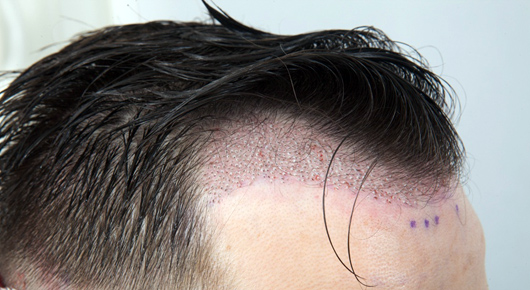Hair loss can significantly impact one's self-esteem, leading many individuals to explore options for hair restoration. Among the popular techniques available today, DHI Direct Hair Implant and FUE (Follicular Unit Extraction) are two widely used methods. While both aim to provide natural-looking results, they differ in technique, precision, and recovery time. Understanding the differences between DHI and FUE can help individuals make an informed decision about which procedure is most suitable for their needs.
What is DHI Direct Hair Implant?
The DHI Direct Hair Implant in Dubai is a revolutionary method of hair transplantation that involves the direct implantation of hair follicles into the scalp using a specialized tool. Unlike FUE, which relies on punching tools to extract and implant hair follicles, DHI uses a pen-like instrument known as the Choi Implanter Pen. This device allows for the precise and direct placement of hair follicles into the scalp without the need for incisions or stitches. The direct implantation method enables greater control over the depth, angle, and direction of the hair follicles, leading to more natural results.
How Is DHI Different from FUE?
The primary difference between DHI Direct Hair Implant and FUE lies in the technique of follicle extraction and implantation. In FUE, individual hair follicles are extracted from the donor area using a tiny circular punch. These follicles are then carefully transplanted into the recipient area. While FUE is minimally invasive and provides great results, it requires the use of small incisions to insert the follicles, which can sometimes lead to a longer recovery period.
On the other hand, DHI eliminates the need for any incisions. The Choi Implanter Pen allows for direct implantation, reducing the risk of scarring and minimizing trauma to the scalp. Additionally, DHI provides more precision in follicle placement, ensuring that the hairline and overall appearance look more natural.
Benefits of DHI Over FUE
DHI offers several advantages over FUE, including:
- Precision and Control: The Choi Implanter Pen enables highly accurate placement of follicles, improving the overall aesthetic result.
- Minimal Scarring: Since no incisions are made, DHI typically results in less scarring compared to FUE.
- Faster Recovery: With fewer incisions, patients undergoing DHI generally experience quicker healing times.
- No Need for Shaving: DHI often requires less shaving of the recipient area, which is beneficial for individuals who want to avoid visible signs of hair restoration during the procedure.
- Improved Hair Density: Due to the precise implantation, DHI can result in a denser and more natural-looking hairline.
FAQs
1 Which method provides more natural-looking results?
DHI is known for its precision in follicle placement, leading to more natural-looking results, especially in hairline restoration.
2 Is the recovery time different between DHI and FUE?
Yes, DHI generally has a faster recovery time due to the absence of incisions, resulting in less trauma to the scalp.
3 Do both methods require shaving of the donor area?
In FUE, shaving is necessary, but DHI can be performed with minimal shaving, which is beneficial for those who want to keep their hair short.
4 Which method is better for individuals with sensitive skin?
DHI might be a better option for those with sensitive skin since it involves less scalp trauma and no incisions.
5 Can both methods be used for eyebrow and beard transplants?
Yes, both DHI and FUE are suitable for eyebrow and beard transplants, but DHI is often preferred due to its precision in small, delicate areas.
Conclusion
In conclusion, while both DHI Direct Hair Implant and FUE are effective hair restoration techniques, DHI stands out for its precision, minimal scarring, and quicker recovery time. Choosing between these two methods depends on individual preferences, the severity of hair loss, and the desired outcome. Consulting with a hair restoration specialist can help you decide which method will best meet your needs.





Comments